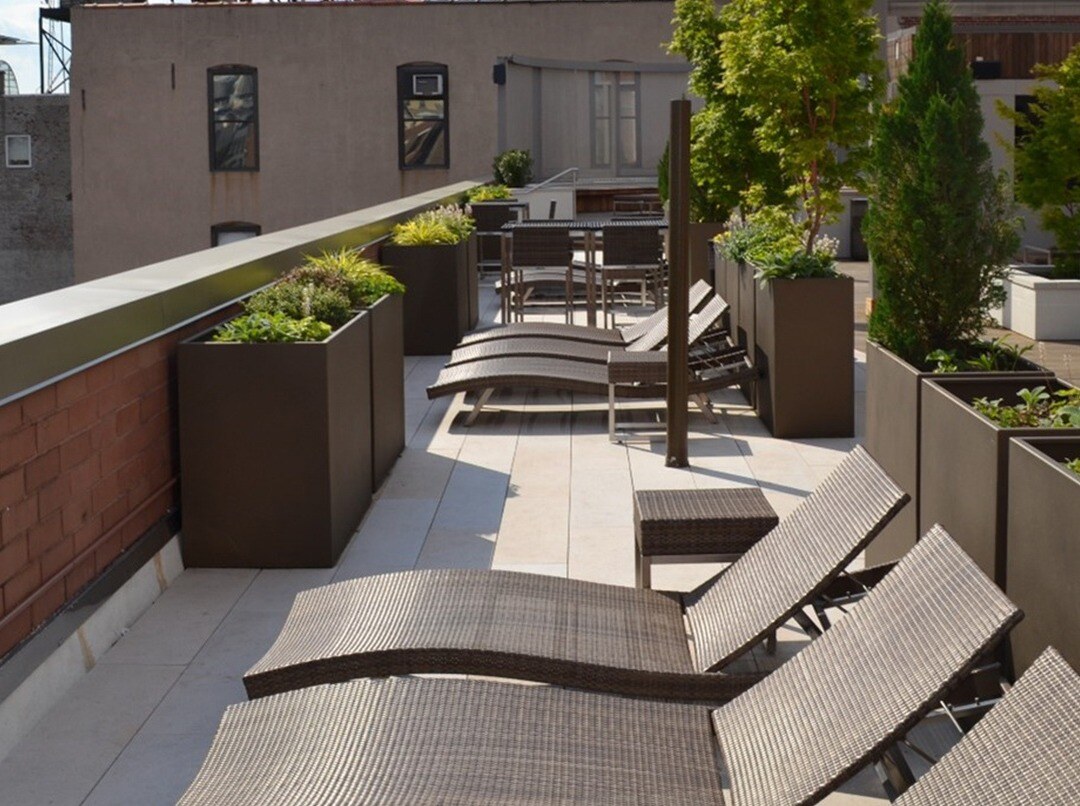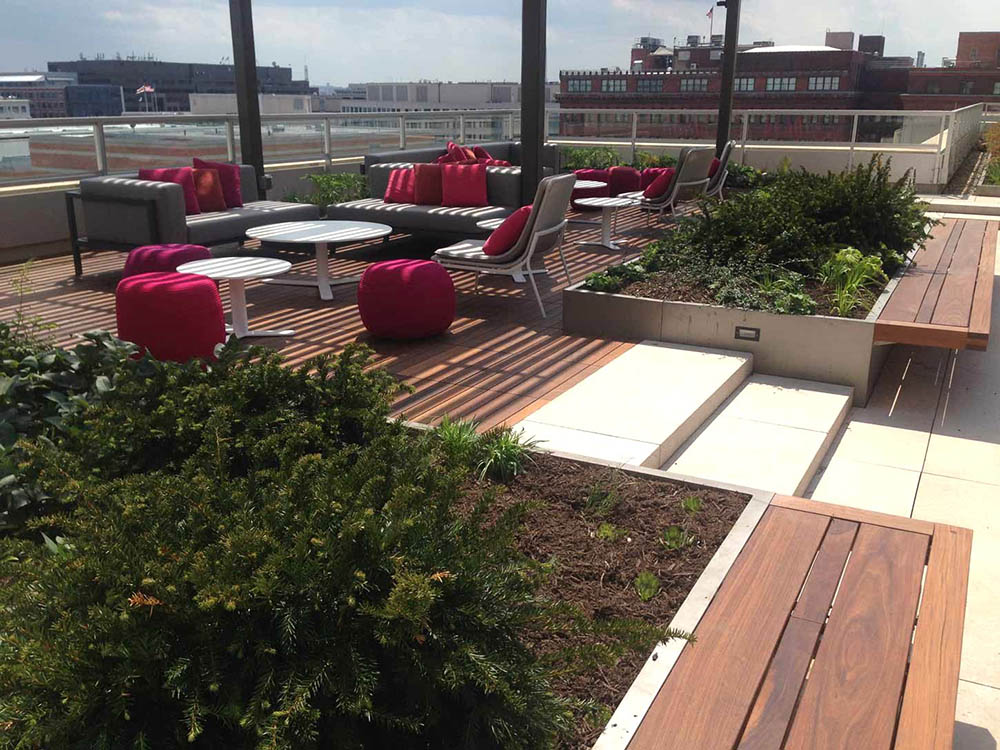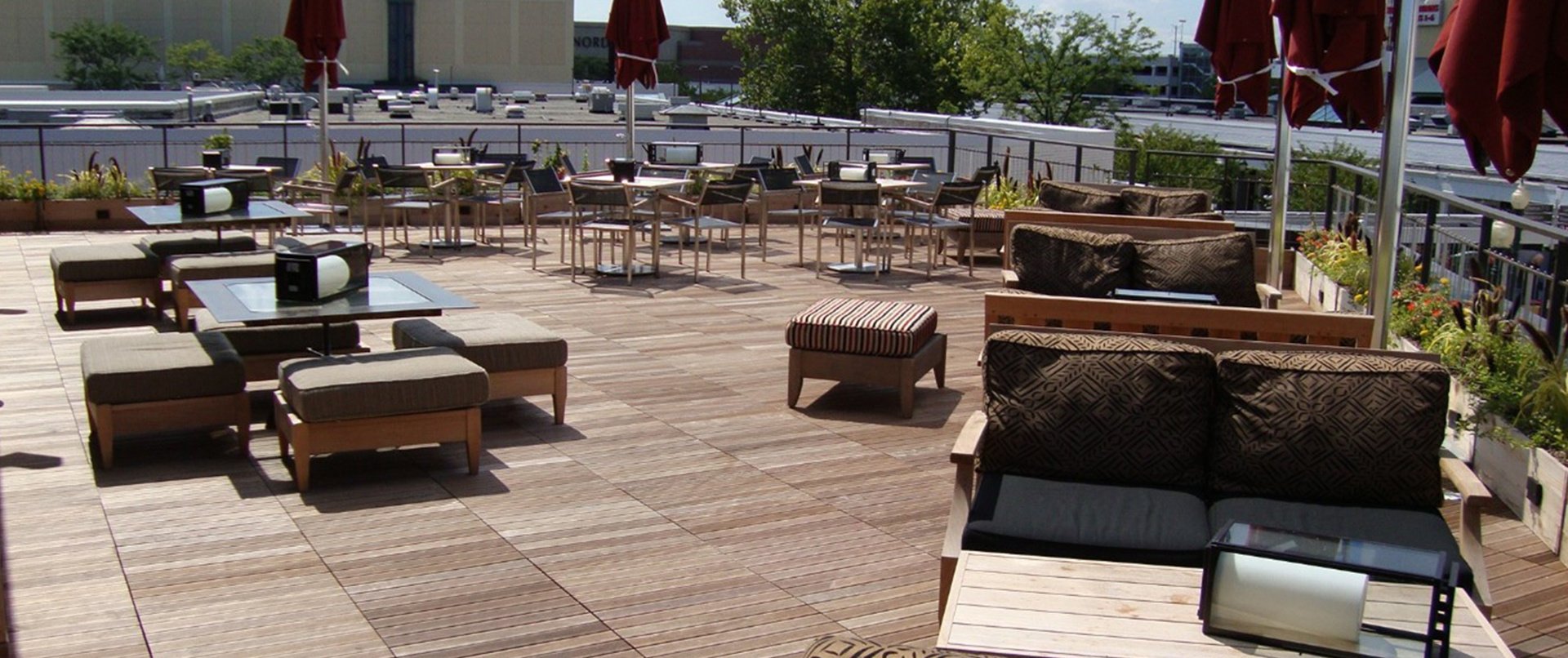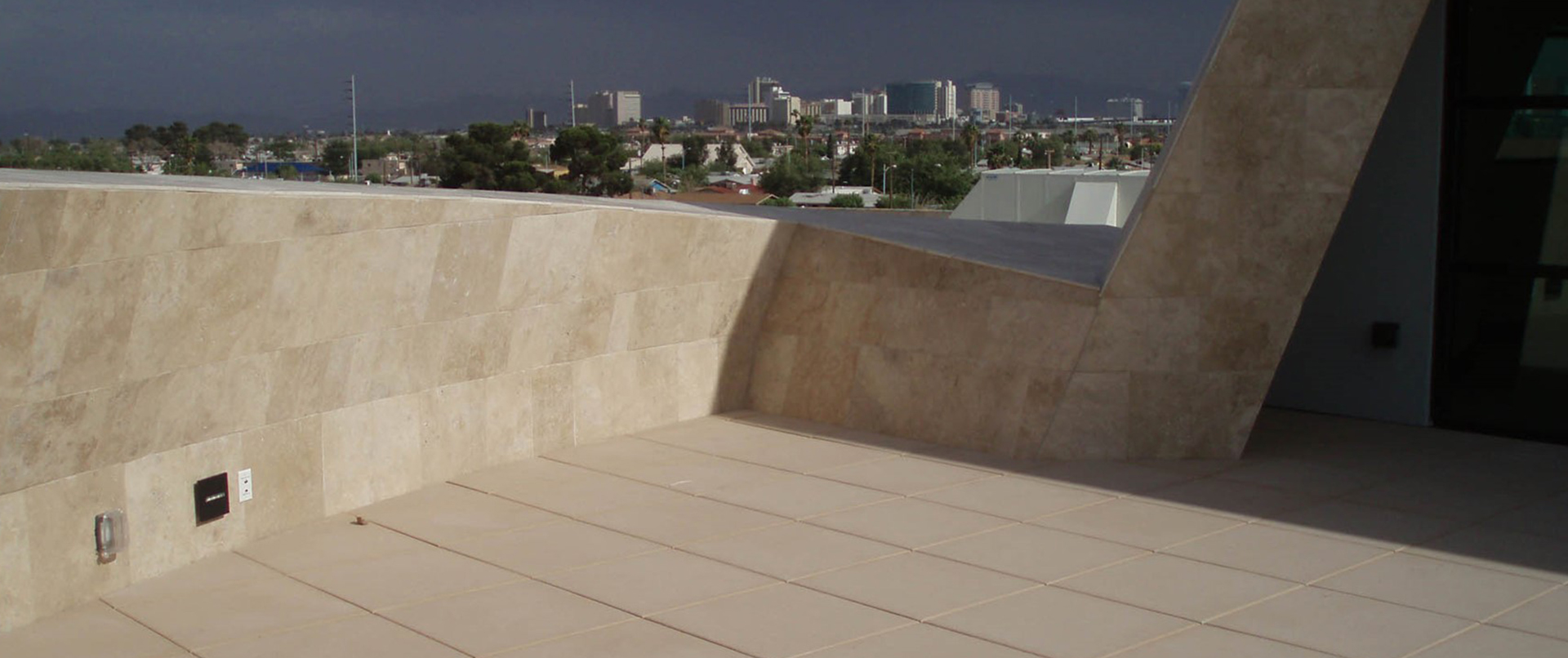Designing with Nature in Mind
Biophilic design is an evidence-based architectural approach that brings natural elements into the built environment to improve human well-being. It is rooted in the understanding that our bodies and minds evolved in direct contact with nature. When we reintroduce those conditions into modern spaces, we see measurable improvements in mood, focus, and physiological health. Sunlight, fresh air, vegetation, natural materials, and water features are not decorative accents - they are core design components that influence everything from stress hormone levels to cognitive performance.
Incorporating nature into rooftop environments presents unique challenges. While sunlight, wind, and fresh air are often present, features like vegetation, water, and natural materials require deliberate planning. Planters for the deck are one of the tools that allow designers to bring these elements into spaces where direct contact with the ground is not possible.
The Patterns of Biophilic Design in Rooftop Spaces
Biophilic design principles can be applied to rooftops in many ways:
- Visual Connection with Nature – Views of plants, water, or sky improve mood and mental clarity.
- Non-Visual Connection – Sounds of wind in foliage or the scent of flowers enhance sensory richness.
- Thermal and Airflow Variability – Access to sunlight, shade, and natural breezes improves comfort.
- Presence of Water – Fountains or small water features can reduce stress and mask urban noise.
- Material Connection with Nature – Wood, stone, and other natural materials create tactile links to the outdoors.
- Connection with Natural Systems – Seasonal planting schemes and exposure to daylight cycles reinforce a sense of place and time.
On rooftops, these patterns often need engineered solutions to be feasible. This is where planters, shade structures, and modular surfaces come into play.
How Planters for the Deck Enable Nature on Rooftops
While a planter is not a biophilic element on its own, it enables the inclusion of living vegetation in elevated spaces. With the right design and plant selection, planters can:
- Introduce greenery and seasonal color for visual connection.
- Support pollinator-friendly species for non-visual engagement.
- Incorporate materials and finishes that echo natural textures.
- Create micro-ecosystems that connect users to local climate and ecology.
The impact of these strategies extends far beyond aesthetics. Studies link access to nature with lower blood pressure, reduced cortisol levels, and improved immune function. In workplaces, biophilic elements have been tied to higher employee satisfaction, fewer sick days, and increased task accuracy. In healthcare settings, patients with access to greenery and natural light recover more quickly and require less pain medication. In residential and hospitality projects, these features increase perceived value and long-term occupancy rates.
Engineering for Safety and Performance
Incorporating vegetation into a rooftop design adds load that must be planned for in advance. The total weight of each planter includes soil, water, vegetation, and the container. Bison Innovative Products manufactures modular pedestal systems that evenly distribute weight, protect the waterproofing layer, and allow slope correction.
Planters for the deck can be integrated with irrigation systems and drainage solutions to ensure long-term plant health and manage runoff. Always consult a structural engineer to confirm load capacity and compliance with local codes. For more details, refer to Bison’s Testing Resources.
Case Study: Children's Hospital of Orange County

This hospital rooftop deck demonstrates how planters can support biophilic goals. Using Bison smooth wood tiles and Versadjust Pedestals, the design accommodates large planters and built-in seating without compromising waterproofing.
The result is a calming outdoor space where patients, families, and staff connect with sunlight, wind, and greenery, all factors linked to improved recovery times and reduced stress.
Why Real Vegetation Matters
Artificial greenery may replicate the look of plants, but it cannot match the functional benefits of living systems. Real vegetation produces oxygen, filters airborne pollutants, and supports urban biodiversity by attracting pollinators and beneficial insects. It also moderates rooftop microclimates, cooling surfaces in the summer, reducing the heat island effect, and retaining moisture after rainfall. These environmental contributions reinforce the role of biophilic design in promoting both human health and ecological responsibility.
Read more: Designing a Rooftop Deck Garden for Summer Enjoyment
Designing for People
Planters for the deck can help define pathways, screen private areas, and create focal points. When combined with other nature-based design strategies, such as varied lighting, shade, and airflow, they become part of a cohesive biophilic environment that supports health, productivity, and well-being. For reference, see Bison’s site furnishings and deck design tips.
Infrastructure for Nature

Biophilic design transforms rooftops into more than just outdoor spaces. By combining planters for the deck with other strategies that introduce nature, designers can create places that enhance human experience and deliver long-term value.
To explore modular planter-ready solutions for your rooftop project, contact Bison Innovative Products or view the Bison product lineup.
FAQ
What plants work best in rooftop planters for the deck?
Choose drought-tolerant species suited to rooftop conditions, such as ornamental grasses, lavender, or sedum. Native plants often perform well due to climate adaptability.
Are planters for the deck difficult to maintain?
With proper irrigation planning and maintenance access, they can be low-effort. Modular systems allow for repositioning or replacement as needed.
Do planters for the deck affect waterproofing?
If not properly supported, they can. Bison pedestal systems elevate planters above the membrane and distribute weight to evenly maintain performance.
Important Notice:
Bison Innovative Products recommends that all rooftop deck systems should be installed by a licensed contractor with at least 2 years of proven experience. Plans and designs for a rooftop deck should be reviewed by a safety or structural engineer before construction begins. The roof must be able to safely carry the static and live load weights of the rooftop deck, and any amenities added, along with the appropriate density of any insulation to resist crushing and protect the waterproof membrane. Adding items such as hardscaping features, hot tubs, or pools to a rooftop deck requires additional guidance and oversight from an engineer. Property owners should research and follow any building codes and other regulations to obtain the required permits before installation. Please review all product specifications on bisonip.com before starting any installation.
Explore more:
.png?width=100&height=100&name=BisonIP-logo-PMS425-2023%20(1).png)




